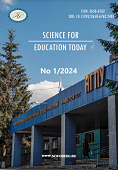Возможности искусственного интеллекта в сохранении языкового разнообразия для будущих поколений
The potential of artificial intelligence in preserving linguistic diversity for future generations
Author(s): Tatiana Victorovna Ermolova, Natal’ya Vasil’evna Savitskaya, Ol’ga Vital’evna Dedova, Alexandra Victorovna GuzovaSubject(s): Language studies, Communication studies, Social Informatics, ICT Information and Communications Technologies
Published by: Новосибирский государственный педагогический университет
Keywords: Artificial intelligence; Linguistic diversity; Language preservation; Language bias; Language inequality; Educational programs; Natural language processing;
Summary/Abstract: Introduction. The significant and only partially solved problem of preserving cultural heritage and linguistic diversity in the world can obtain additional ways of solving by means of using modern technologies, in particular, the Artificial Intelligence (AI). The purpose of this article is to analyze up-to-date research data on the possibility of preserving linguistic diversity by means of Artificial Intelligence technologies and evaluate their effectiveness taking into account linguistic transformations determining the development of AI. Materials and Methods. This review is aimed at analyzing the data available in scholarly literature on the potential of artificial intelligence in preserving linguistic diversity and the existing limitations in the case of its application to rare and endangered languages. Results. The search for data on the research problem revealed that using AI technologies as tools for implementing the task of preserving linguistic diversity is still the subject of discussion mainly in the media and public spheres and is extremely poorly represented in academic literature. Among the challenges partially related to the potential of AI is the linguistic bias of many AI systems, which is rooted in the data used to train them, which can further entrench social and linguistic inequalities among certain ethnic groups and create difficulties in building educational models for teaching these languages with the help of AI. The authors argue that AI systems can be trained to recognize and analyze linguistic patterns of languages that have been understudied or are endangered, including building educational models in native languages for small ethnic groups at risk of losing the language of communication. There is evidence that AI can recreate lost languages. A major challenge in using AI to preserve linguistic diversity is the lack of data on many languages that are rarely used in the media space or are endangered. Conclusions. Finally, the authors conclude that AI technologies are recognized as promising for preserving linguistic diversity.
Journal: Science for Education Today
- Issue Year: 14/2024
- Issue No: 1
- Page Range: 184-198
- Page Count: 15
- Language: Russian

